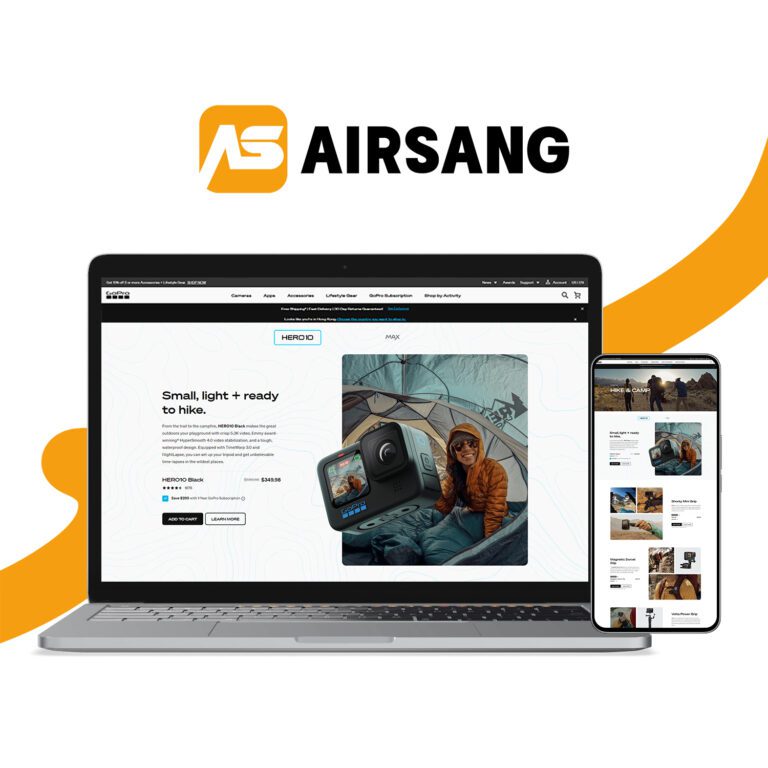10 Essential Questions to Ask Before Creating Your Website
Want to turn a good website into a great one? At Airsang Design, we help you go beyond visuals—with smart strategies to boost rankings, engage users, and convert traffic into loyal customers. Let’s aim for page one, together.

How important is website loading speed?
Absolutely—site speed directly impacts SEO, user experience, and conversions. With an average load time of 3.2 seconds, any delay increases bounce rates and decreases engagement. A fast site builds trust, reduces drop-offs, and keeps visitors converting.
What impacts how fast my website loads?
- Page Weight: Oversized images, uncompressed videos, and bloated scripts slow load times. Minify code and compress media to speed things up.
- Network Conditions: Mobile users often face slower 3G/4G speeds. Avoid large files that drain data and delay loading.
- Hosting Location: The farther your server is from your users, the longer it takes to load. Choose hosting close to your target audience.
What are the key essentials for understanding SEO rankings?
SEO, or Search Engine Optimization, determines how visible your site is on search engines—where 93% of online journeys begin. Since most users never go past page one, strong organic rankings are critical.
Key SEO factors include:
- High-quality, relevant content
- Regular content updates
- Backlinks from trusted sources
- Mobile responsiveness
- Fast page load speeds
- Secure HTTPS access (SSL)
- User-friendly navigation and UX
At Airsang Design, we build with SEO best practices in mind to help you rank higher and convert better.
Why Isn’t My Website Appearing in Google Search Results?
If your site isn’t showing on Google, it could be due to several reasons beyond timing. While SEO takes at least 3 months to gain traction, common issues include:
- Site not yet indexed by Google
- Missing or poor SEO structure
- Highly competitive keywords
- No or thin content on key pages
- Duplicate content flagged
- “No index” tags blocking search engines
- Google penalties or manual removal
Stay patient, fix technical issues, and build strategic content to improve visibility.
What Does Bounce Rate Mean — And Should You Be Worried About a High One?
Bounce Rate measures the percentage of users who visit one page and leave without further interaction. A high bounce rate isn’t always bad—it may mean users found exactly what they needed, like a phone number or article.
Typical bounce rates vary by site type:
- Blogs: 70–90%
- Content sites: 40–60%
- E-commerce: ~45%
- Service pages: 10–30%
Still concerned? Airsang Design can help reduce bounce rates with better UX and content strategy.
How can I identify why visitors are exiting my website?
In today’s fast-paced world, holding a user’s attention for 30 seconds is already a win. If they stay that long, they’re more likely to continue browsing.
So why do users leave?
- Slow loading times
- Outdated or missing content
- Annoying pop-ups
- Broken links or poor navigation
- Unclear answers or value
- Accidental exits (especially on mobile)
While some exits are unavoidable, addressing the technical and content-related issues can help reduce bounce rates and keep users engaged.
Is a Blog Actually Necessary for My Website?
Feeling stuck staring at a blank screen? You’re not alone. But maintaining a blog is worth it—especially for SEO. Each post is a new opportunity to drive traffic and boost visibility.
Active blogs average:
- 55% more site visitors
- 97% more inbound links
- 434% more indexed pages
Even simple, helpful posts—like tips, advice, or how-tos—can build trust, grow your email list, and boost conversions.
What’s the Ideal Blog Posting Frequency?
Ideally, post blogs 3 times a week—once a month at minimum. Quality beats quantity, so only publish valuable content. More posts = more chances to gain traffic and leads, but avoid writing just to fill a quota.
Tips:
- Organize blogs into clear categories (never leave them uncategorized)
- Match your page slug to the title
- Proofread and spell check
- Stay consistent so search engines see your site as active
What Is a CTA and How Can It Drive More Conversions?
A CTA (Call to Action) prompts users to take the next step—like “Buy Now” or “Sign Up.”
Tips for effective CTAs:
- Use bold colors and clear, actionable text
- Make buttons visually clickable
- Avoid clutter—limit CTAs per page
- Be specific (e.g., “Register Now” vs. “Submit”)
- Test placement above, below, or beside content for best results
How can I access more in-depth website analytics?
Use tools like Google Analytics, SEMrush, Ahrefs, or MOZ to track website performance. For tailored insights, contact a digital agency like Airsang Design—we’re here to help.
















